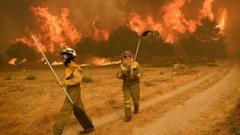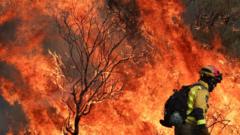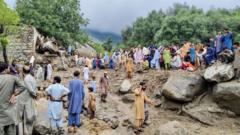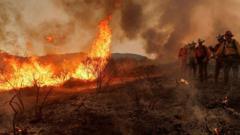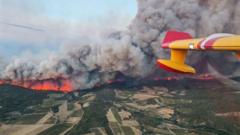In Pakistan-administered Gilgit-Baltistan, an innovative AI project by the WWF aims to safeguard the dwindling snow leopard population by alerting farmers to their proximity through text messages. While community acceptance poses challenges, the project serves as a critical measure alongside legal penalties to combat retaliation killings of these elusive predators.
Can AI Technology Avert the Extinction of Snow Leopards?
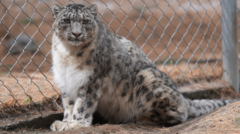
Can AI Technology Avert the Extinction of Snow Leopards?
A groundbreaking initiative in Pakistan seeks to protect snow leopards, utilizing AI-driven cameras to alert villagers of their presence.
In the rugged terrains of Gilgit-Baltistan, a new strategy is emerging in the fight against the extinction of snow leopards, a species that has seen a significant decline in its population over the past two decades. The World Wide Fund for Nature (WWF), in collaboration with Pakistan's Lahore University of Management Sciences (LUMS), is piloting a project utilizing artificial intelligence (AI) to safeguard these majestic animals and the livelihoods of local communities.
Snow leopards are unique, with a current global population estimated to be between 4,000 and 6,000, and they face numerous threats, primarily from livestock retaliatory killings after the leopards attack farmers’ animals. In Pakistan alone, where approximately 300 of these leopards reside, deaths from such conflicts are on the rise. The WWF reports that between 221 to 450 snow leopards are killed each year due to these conflicts, which account for a disheartening 20% decline in their population.
At the heart of the initiative are AI-powered cameras, strategically placed in the snow leopard habitats to detect their presence and subsequently alert nearby villagers through text messages, allowing them to secure their livestock. Positioned over 2,900 meters (9,500 feet) above sea level, these cameras utilize solar energy and advanced image recognition to distinguish between humans, livestock, and leopards.
Conservationist Asif Iqbal elaborates on the science behind the AI, showcasing a dashboard that accurately identifies snow leopards, thus indicating progress in wildlife monitoring. However, establishing the technological infrastructure in harsh, mountainous terrain is only part of the challenge. The WWF has observed initial skepticism among local communities, where distrust regarding the project has manifested in vandalism, such as broken wires and covers placed over cameras to obstruct their functionality.
Community engagement is crucial; many villagers have yet to consent to privacy agreements, and addressing their concerns, particularly around women’s privacy, has been important in gaining their trust. Despite the technology's promise, some villagers express doubts about its efficacy. Sitara, a local farmer who lost six sheep to a snow leopard, voices her frustration regarding insufficient mobile service to receive alerts.
On the broader scale, understanding the ecological role of snow leopards is gaining traction, with local leaders increasingly recognizing their importance in maintaining balanced ecosystems. Snow leopards naturally control populations of animals like ibex, which can overgraze and adversely affect pasture availability for livestock.
However, climate change presents an even more complex challenge, exacerbating the competition for space between livestock and snow leopards. Monitoring efforts, including the potential introduction of deterrents such as sounds and smells, aim to complement AI technology to minimize human-hedgehog conflicts.
As the WWF continues this ambitious venture, the combination of cutting-edge technology and community cooperation may prove vital in saving the snow leopard from extinction, highlighting the importance of cohabitation between wildlife and local agriculture. The resolution of these challenges will determine not only the fate of the snow leopards but also the sustainable livelihood of the communities sharing their habitat.




